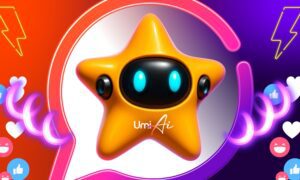In the rapidly evolving landscape of artificial intelligence and natural language processing, ChatGPT has emerged as a groundbreaking model that showcases the remarkable progress made in the field. Understanding the intricacies of ChatGPT and its implications for natural language understanding is crucial for both AI enthusiasts and businesses looking to leverage this technology. In this comprehensive article, we will take a deep dive into ChatGPT and explore its inner workings, applications, and the role it plays in enhancing natural language understanding.
Introduction
ChatGPT: A Brief Overview
ChatGPT is a powerful language model developed by OpenAI, building upon the success of its predecessor, GPT-3.5. It represents a significant leap in the field of conversational AI, designed to generate human-like text responses to user inputs. The model has been pre-trained on a vast corpus of text from the internet, allowing it to understand and generate text in multiple languages and domains.
Key Features of ChatGPT
Conversational Context: ChatGPT excels at maintaining context in conversations, making it suitable for chatbots, virtual assistants, and customer support applications. It can engage in coherent and context-aware dialogues with users, providing a more natural and human-like experience.
Multimodal Inputs: ChatGPT can process both text and image inputs, expanding its utility beyond text-only interactions. This capability opens up opportunities for applications in image captioning, content generation, and more.
Fine-Tuning: Businesses and developers can fine-tune ChatGPT for specific tasks and industries, tailoring its responses to meet their unique requirements. This adaptability is a key advantage in creating customized AI solutions.
The Inner Workings of ChatGPT
ChatGPT operates on a transformer architecture, which has become the standard for many state-of-the-art natural language processing models. This architecture consists of multiple layers of self-attention mechanisms, enabling the model to capture long-range dependencies and contextual information in text.
Training ChatGPT involves two main stages:
Pre-training: In this phase, the model is exposed to a massive amount of text from the internet. It learns to predict the next word in a sentence, which helps it grasp grammar, syntax, and common patterns in language.
Fine-tuning: After pre-training, ChatGPT is fine-tuned on specific datasets that provide guidance for particular tasks or domains. This step is crucial in tailoring the model for real-world applications.
Natural Language Understanding with ChatGPT
ChatGPT’s natural language understanding capabilities stem from its ability to process and generate text that is contextually relevant and coherent. It can perform various NLP tasks, including:
Sentiment Analysis: ChatGPT can analyze text to determine the sentiment behind it, whether it’s positive, negative, or neutral. This is valuable for businesses monitoring customer feedback and social media sentiment.
Entity Recognition: The model can identify entities such as names, dates, and locations in text, aiding in information extraction and content categorization.
Text Summarization: ChatGPT can generate concise summaries of longer texts, making it useful for condensing information and creating abstracts.
Language Translation: Its multilingual capabilities allow ChatGPT to translate text from one language to another, facilitating global communication.
Applications of ChatGPT
Customer Support: ChatGPT can be used to create chatbots that handle customer inquiries, providing quick and accurate responses 24/7.
Content Generation: It excels at generating blog posts, product descriptions, and marketing content, saving businesses time and effort in content creation.
Virtual Assistants: ChatGPT can power virtual assistants that assist users with tasks, answer questions, and schedule appointments.
Healthcare: In the medical field, ChatGPT can assist doctors with documentation, answer patient queries, and help analyze medical literature.
Education: It can serve as a virtual tutor, helping students with homework, explaining concepts, and providing learning resources.
SEO Optimization for ChatGPT-Generated Content
When leveraging ChatGPT for content generation, it’s essential to optimize the output for search engines to maximize its visibility. Here are some SEO tips:
Keyword Research: Identify relevant keywords and phrases that your target audience is likely to search for.
High-Quality Content: Ensure that the generated content is informative, engaging, and valuable to readers.
Meta Tags: Optimize title tags, meta descriptions, and header tags to include target keywords.
Internal and External Links: Incorporate relevant internal links to other pages on your website and include authoritative external links to reputable sources.
Mobile Optimization: Ensure that the content is mobile-friendly, as Google prioritizes mobile indexing.
Page Speed: Improve page loading times, as faster websites tend to rank higher in search results.
Conclusion
ChatGPT represents a significant advancement in natural language understanding and has far-reaching implications for various industries. Its ability to engage in coherent conversations, process multimodal inputs, and adapt to specific tasks through fine-tuning makes it a versatile tool for businesses and developers.
As AI technology continues to evolve, it’s crucial to stay updated on the latest developments and explore how ChatGPT can enhance natural language understanding in your applications. Whether you’re looking to improve customer support, generate content, or revolutionize education, ChatGPT has the potential to be a game-changer in the world of artificial intelligence and NLP. Embrace this transformative technology, and unlock new possibilities in natural language understanding and communication.



































